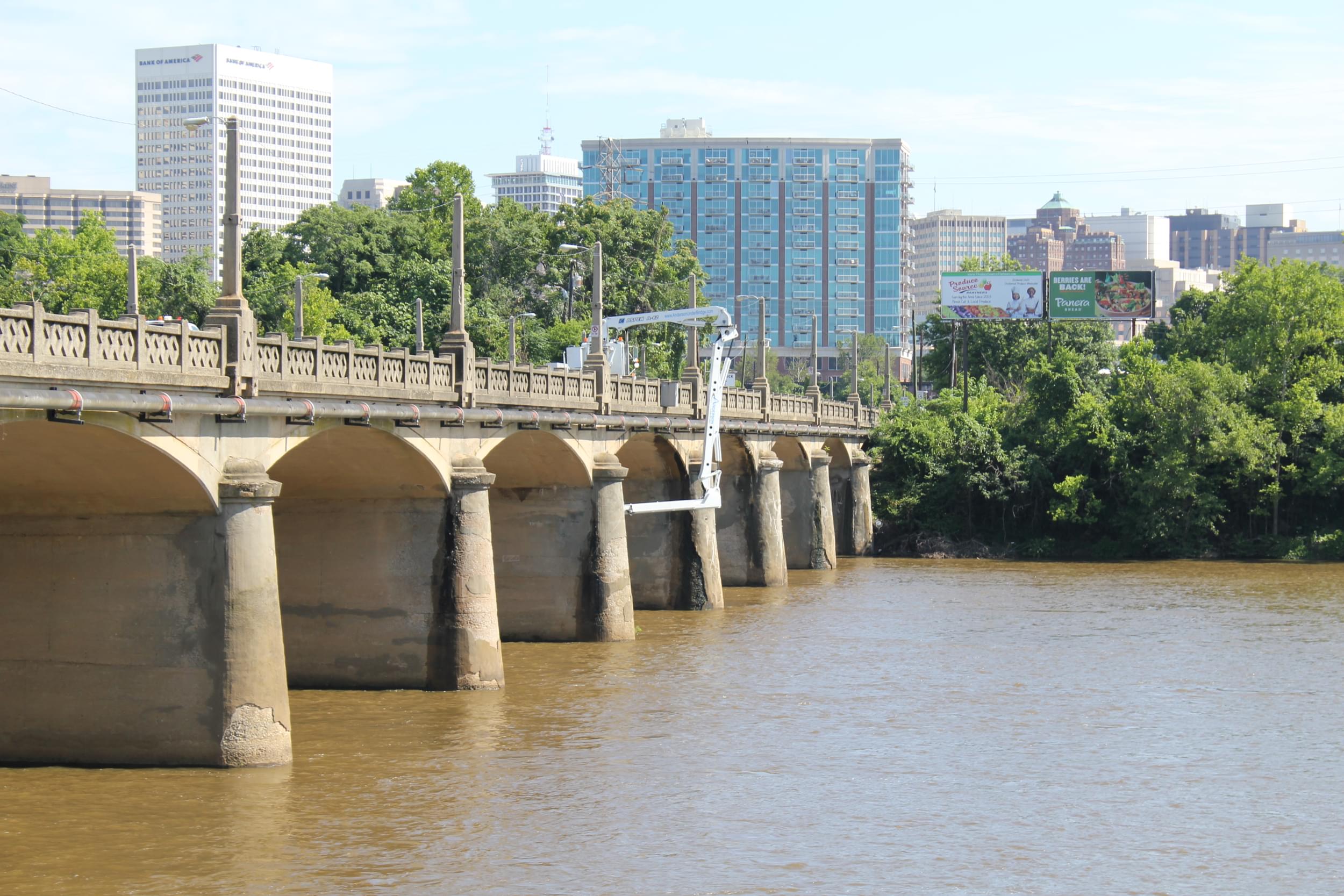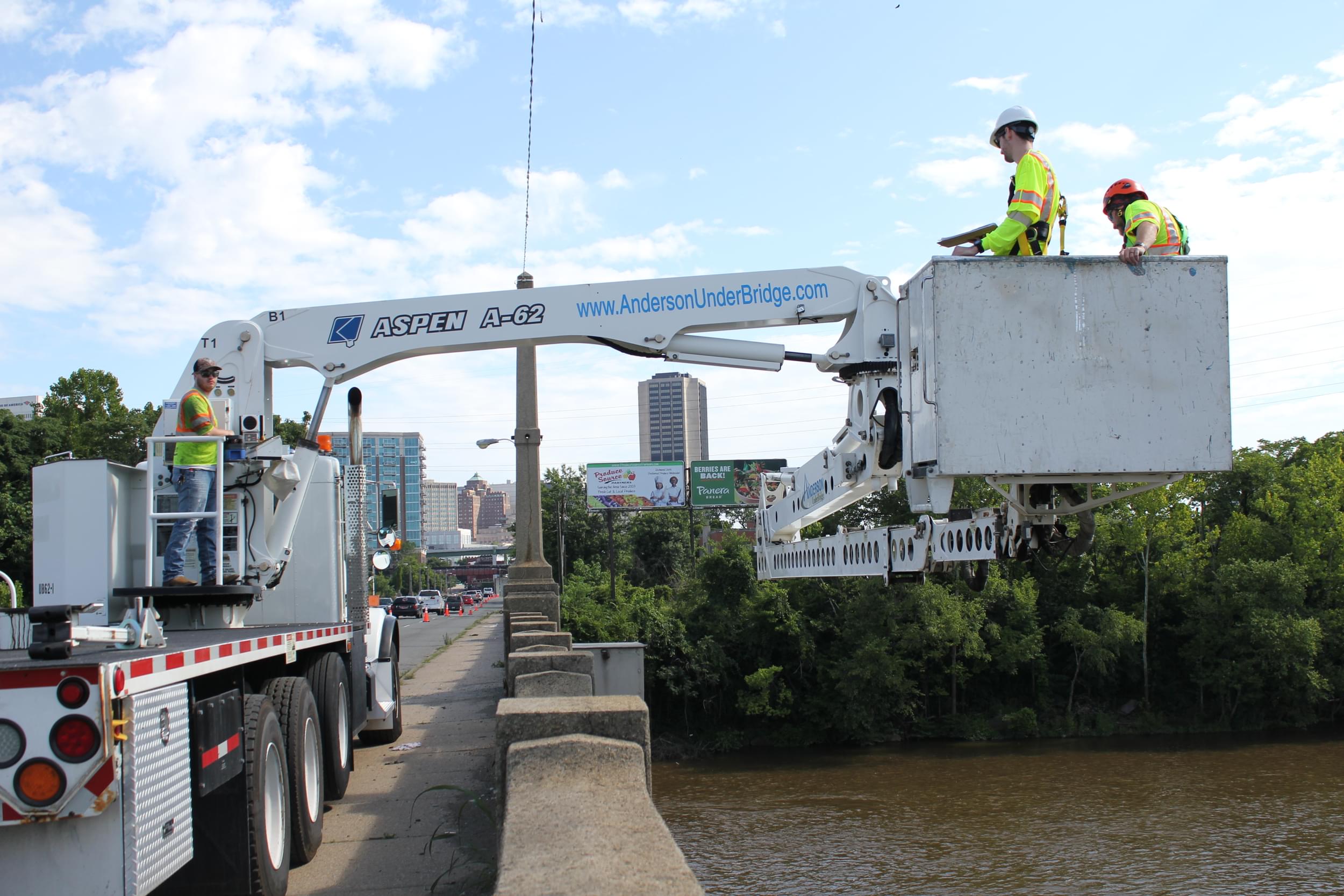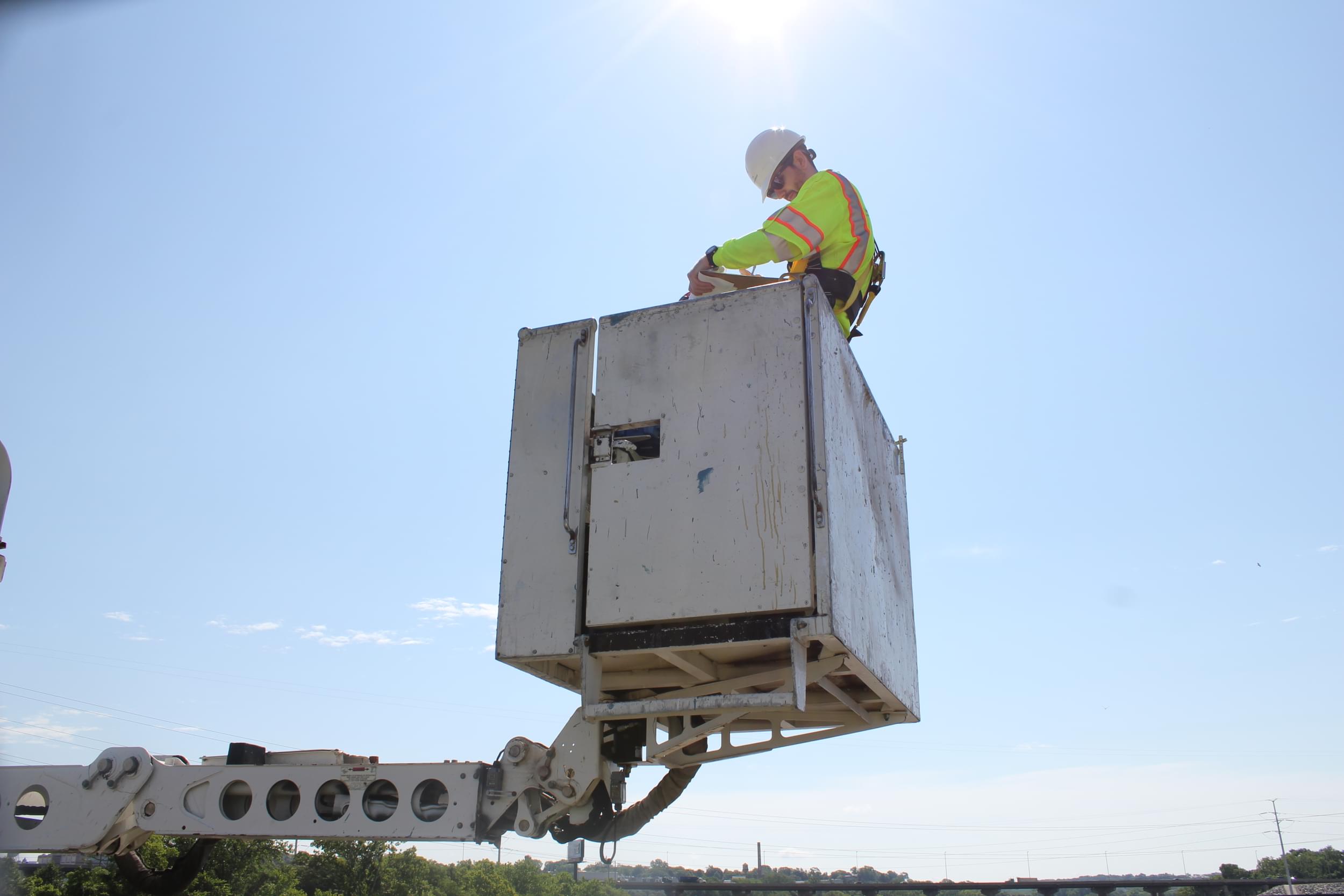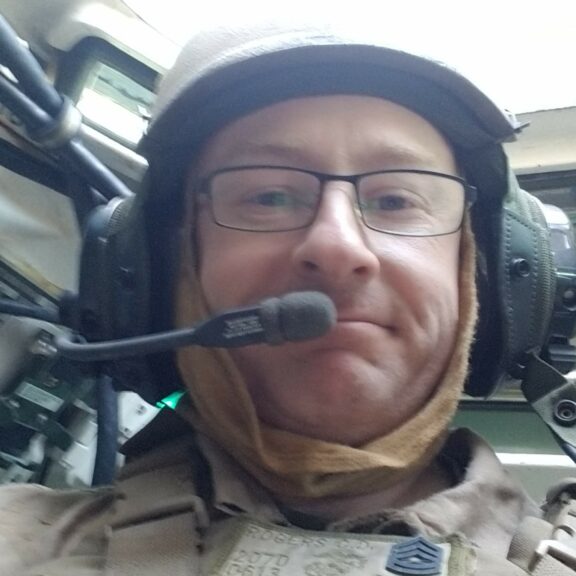As communications professionals, our constant job is to learn more about the services Timmons Group offers so we can share the firm’s expertise with our audiences. We use a combination of video interviews, site visits, and research to get a better understanding of what our technical counterparts’ everyday careers entail. Sometimes a quick conversation at the water cooler will even lead to an idea for a blog or project spotlight.
One of my favorite things to do as a communications manager in the AEC space is to equip myself with the proper PPE and join our engineers on site visits to see their trades in action. Recently, our marketing crew joined the firm’s Richmond structural engineering team to the Mayo Bridge, just outside of downtown Richmond, where they performed a bridge inspection.

The Mayo Bridge (also called the 14th St. Bridge) connects Route 360 across Mayo Island and the James River from downtown to the Manchester neighborhood. It’s about 1,300 feet in length and is four lanes across. With the first structure dating back to 1788, the Mayo Bridge is Richmond, Virginia’s oldest crossing of the James River. The bridge is named for the Mayo family, a series of generational civil designers who are well-known for advocating and carrying out many of the City’s original infrastructure plans. The bridge, which once served as a toll road, took its final form in 1913 after a lifetime of hardships that included structural damage from blizzards, floods, and being set aflame by the Confederate army during the Civil War.
All that is to say… The Mayo Bridge has a story, both historically and physically. All that history comes with the need for inspections to ensure that the bridge is safe for the public.


The structural team that we met on site consisted of Harrison Figan, a project engineer, and Stuart Pitre, a bridge inspector.
Harrison graduated with a bachelor’s degree in civil and environmental engineering from Virginia Tech. He uses educational and professional training to assist the design team with design work, drafting, and site inspections. He is proficient in design software such as AutoCAD and MicroStation, which he uses in his experience with culvert safety inspections, building safety inspections, drafting, and retaining wall design.
Stuart is a VDOT certified bridge inspector and Commercial Dive Supervisor. One of Stuart’s areas of expertise in the inspection process is the MOT (movement of traffic) scenario. MOT consists of preparing the inspection site properly by setting up specific cones and signage that help the public understand that an active work zone is in progress. This keeps both the public and the technical professionals safe during an inspection.
Safety during inspections is crucial, Harrison says. “In order to stay safe in the field, we always need to be aware of our surroundings. Typically, bridges are still open to traffic during inspections, so it is important to watch out for vehicles around us at all times. It is also important that we wear all the necessary PPE like hard hats, high visibility vests, and harnesses so the public can easily spot us on the side of the road while we’re working.”


The day we visited Harrison and Stuart on site, they were conducting a series of checks along the underside of the bridge, an area that cannot be inspected without proper PPE and machinery. The team also checks the top of the bridge in their annual inspections.
When we arrived, they were already well into their inspection from a snooper truck, a specialized bucket truck that is designed for engineers to safely access the underside of a bridge. While I didn’t think to ask at the time, Harrison revealed later that the model of snooper truck they used for the inspection has an under-bridge reach of 60 feet. That’s about six building stories.

Harrison and Stuart were conducting an annual inspection of the Mayo Bridge. “Right now, we’re looking for cracks on the underside of the bridge. They could present as white looking, known as efflorescence, which is a chemical reaction between the concrete and freshwater,” Stuart said. Sometimes the cracks could be darker, which could be transverse cracks caused by the expanding and shrinking of concrete with temperature changes. Regardless of the type of fissure or deficiency in the structure, it needs to be reported with each inspection so they can be monitored and corrected.

We stood on the side of the bridge, and the guys remained in the snooper truck, moving up and down as another controller adjusted their axes from the truck cabin manually with a series of knobs and switches. The whole act is very intricate, and you can tell that every person involved is on top of their game during the inspection. The seriousness of the situation is obvious, but it’s also apparent that the team is enjoying themselves on the job.
Harrison, who was honestly beaming while riding in the snooper truck, said, “I chose structural engineering as a career because I get the chance to create work that can make a genuine and lasting impact on society. Our work lasts a really long time, with most bridges designed to have a life span of at least 100 years, so our work will be used by the public for generations to come.”


Once the inspection is complete, the team will take the necessary information back to the office where they’ll create a report to send to the client that summarizes the team’s findings and includes recommendations for any deficiencies found.
Seeing the team in the field is always a treat, partially because putting on a hard hat, safety vest, and steel-toed boots makes for a fun experience out of the office — But mostly because watching our teams apply their training and expertise on a project site is a fulfilling and rewarding experience for everyone.
My biggest takeaways? I had a decent understanding of how much went into a snooper truck bridge inspection before but seeing it in action takes the experience to a whole new level… Quite literally, because the Mayo Bridge is approximately 40 feet above the water level.
Interested in working with our structural team? Check out our open positions at timmons.com/careers.




